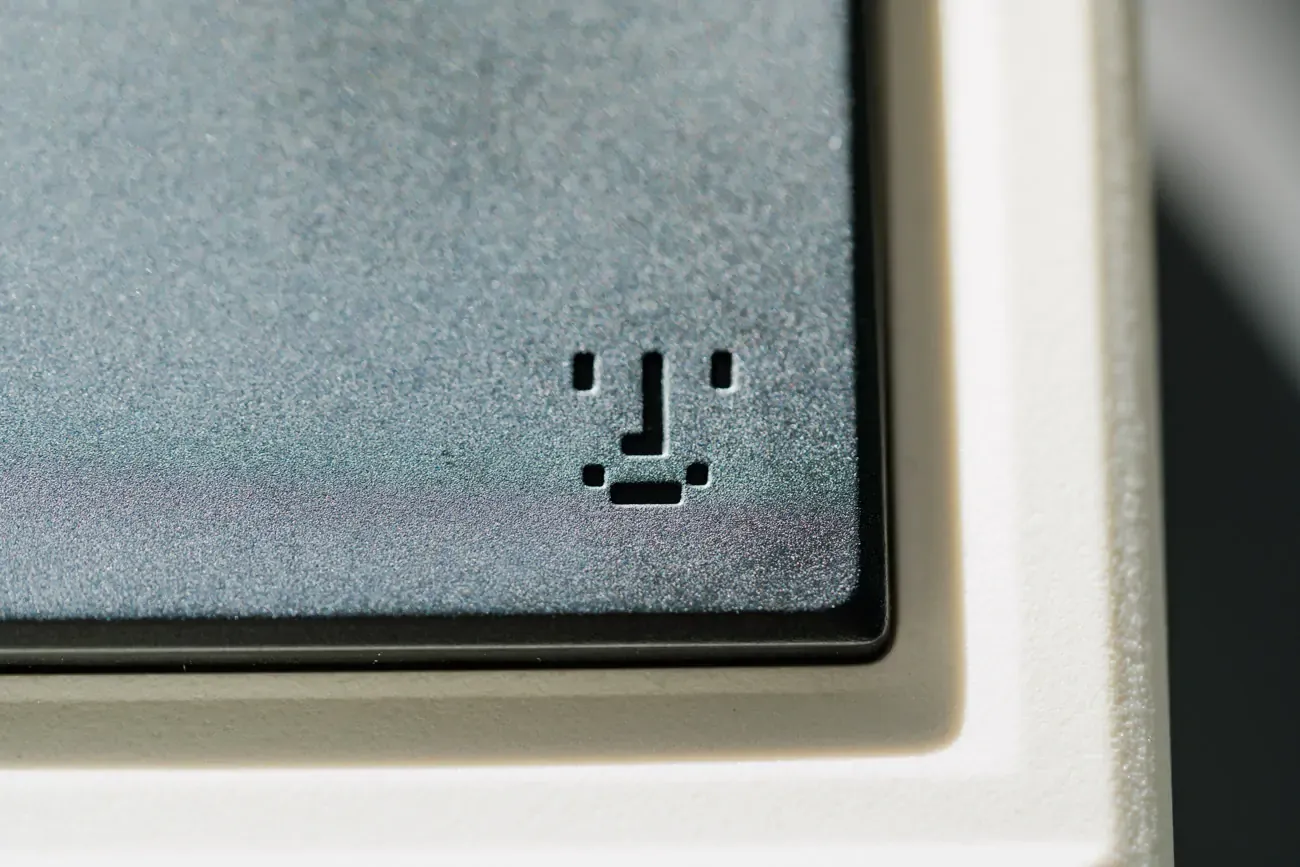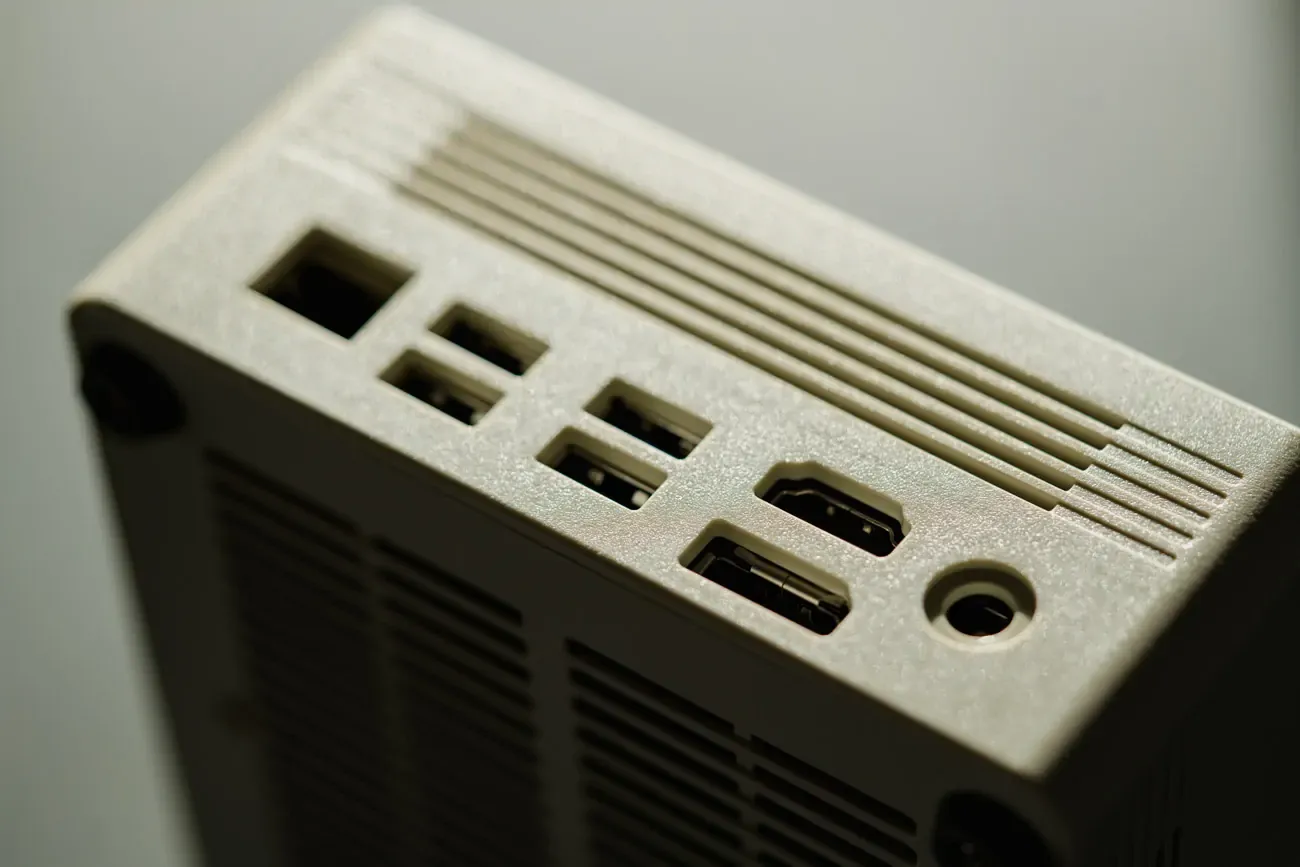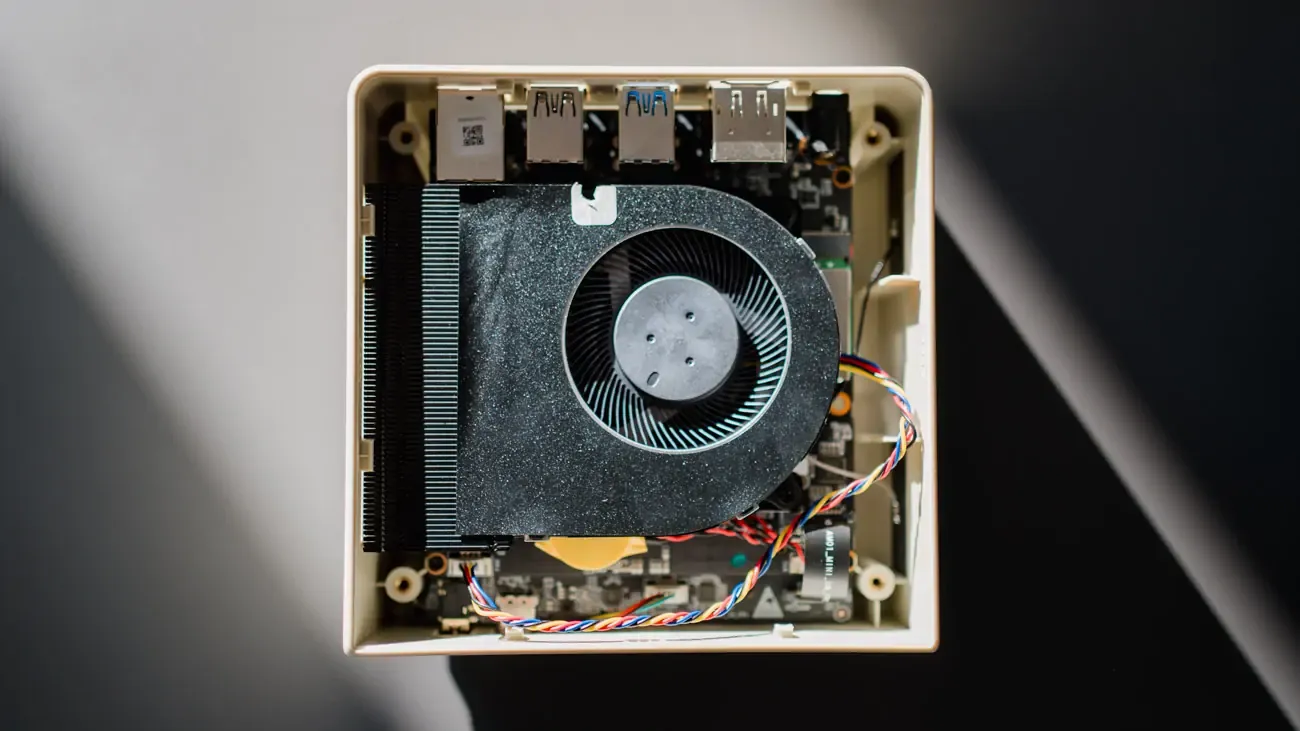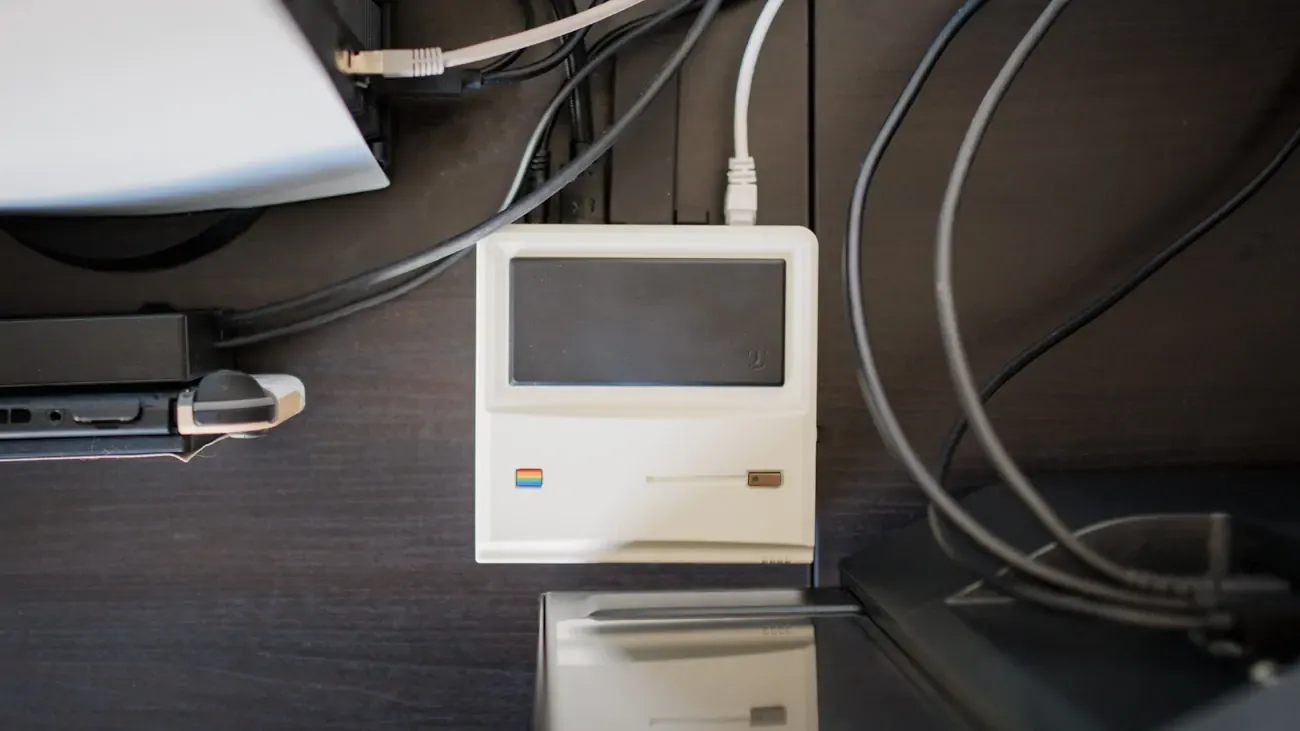The AYANEO AM01 is a new mini PC by a company usually known for handheld devices. In this review, I argue why it is a success.
The AYANEO AM01 is, on paper, something of a strange product. It is, after all, a mini PC by a company that's, so far, only known for its handheld devices. Their handhelds are fantastic; I’ve reviewed several of them by now and have liked everyone I’ve used.
But can AYANEO translate their expertise to a form factor they haven’t yet explored? In theory, this should be no problem. After all, a handheld is a PC with a screen and a controller pre-attached. This is vastly simplified, but in the end, all these devices are computers that run Windows 11 — and so does the AM01.
After using this new mini PC over the holiday season, it has gained a permanent place as a mini console attached to my TV next to the PlayStation 5 and the Nintendo Switch.
Let me explain why.
From the moment you unpack the mini PC, it’s clear what the AM01 has been inspired by. It’s in the name, as I believe AM might stand for Apple Macintosh (not that AYANEO will ever acknowledge this).
If you stand it on its side, it looks like the old original Macintosh that Steve Jobs introduced back in 1984.

Only, this one runs Windows 11 Home. It's the same experience as that found on any other Windows-based device you’ve ever got. It’s your typical setup with your typical pre-installed apps, some of which you might want to uninstall immediately.
It also comes with AYANEO’s AYASpace 2, the company's custom control software — though I have to admit, this wasn’t the best experience.
AYASpace 2 is clearly optimised for handheld devices, and in previous reviews, I’ve praised the software. However, with the AM01, the software seems a bit confused. Many options, like customising the controller RGB or the TDP settings are present, and don’t make sense for a stationary PC. For one, there is no controller, and for the TDP, you can push the settings to the maximum and never touch them again.
You can use AYASpace as your go-to library management system with an integrated performance overlay. Still, you can ignore the remaining features of the software and use built-in Windows features or external software, like AMD Adrenaline, to update the drivers.

While, as mentioned previously, the AM01 looks like a Macintosh, it is not meant to be used standing up as you might expect on first look. If stood up the ports would be on top, while the device would also cover up one USB-C and a headphone jack on the 'bottom'. Also, while it might look like a screen, the AM01 doesn’t actually have one. It is a dark slate of plastic, where you can place one of the stickers included in the box to make it look more fancy.
While we’re talking about the ports, the selection is good. It is as follows:
- USB 3.2 Gen Type-C
- 3.5mm mic/headphone combo-jack
- Gigabit Ethernet Port
- 3x USB 3.2 Gen2
- 1x USB 2.0
- 1HDMI 2.0
- DP 1.4
- DC-IN
The AM01 exists in several configurations. You can choose between different memory and storage space options, from 8 GB of memory up to 32 and 256 GB of internal storage up to 1 TB. There is also a barebones version where you can supply your own memory and storage.
You can also easily upgrade the memory and storage of whatever version you pick. I have the 8GB/256GB combo, and there’s enough space to add one additional 2.5” SSD. I have yet to do this, but I plan to upgrade later down the line and change the RAM.
But besides storage and memory, you can also pick between two different configs for the used chip.
Performance
The AM01 runs an AMD 3200U or an AMD 5700 – and I tested the latter.

Similarly to AYANEO’s handhelds, these are chips by AMD meant for laptops. However, they are less powerful than the AMD 7480U currently used in nearly every handheld device except the Steam Deck (reminder: the Z1 Extreme used in the Legion Go and ROG Ally is basically the same chip like the 7480U but optimised for battery life in a handheld).
This means that the AM01 is not a device intended for high-end triple AAA gaming at a 4K60 resolution (but more on that below). But instead, the AM01 is a fantastic device for emulation — and it can comfortably emulate every platform up to the Wii U.
Gaming on the AYANEO AM01
In my tests, it easily ran games for older console generations like the Nintendo 64, GameCube, PlayStation 2, every handheld console, every Sega console, and, of course, older generations. For most of these platforms, I could run the games at a higher resolution than the original (like 3x Internal Resolution for PS2).

The AYANEO AM01 only really struggled with PlayStation 3 and Nintendo Switch emulation. 2D-based PS3 games, like fighting titles, mainly ran without issues, but as soon as I tried heavy hitters like The Last of Us, I brought the AM01 to its knees. The same goes for Nintendo Switch games. So, you shouldn’t get this mini PC if these two platforms are all you want to play.
As for actual PC games, the AM01 is excellent for indies. Hades, Celeste, The Binding of Isaac, Dead Cells, Hollow Knight, Cult of the Lamb, etc. These games ran perfectly without the need to mess with any settings. You can also play older triple-A games if you are willing to downgrade your graphics a little to make them run.
All in all, I am pretty impressed by what this device was able to do. And especially at the price point. You can get the cheapest, non-barebones 5700U-based AM01 (which is the one I recommend) at a price of around $300. This is a competitive price compared to similar offerings on the market, making this a no-brainer if you are looking for such a device.
Streaming is King
But there is another method to run games, which ultimately convinced me to attach this to my TV: streaming.
I own a reasonably beefy gaming PC and am a happy GeForce Now customer. Thankfully, I have good fibre-optic-based internet at home. Combining all these elements makes the AM01 the perfect device for in-house and offsite-streaming. I’ve played several hours of Alan Wake 2 via GeForce Now at 4K60 on my 65” OLED LG C2 (via the DisplayPort port), and it felt fantastic. There were a few hiccups where it was obvious that the game was not running locally on the device, but these were due to GeForce Now and not the AM01.

I’ve also played through Assassin’s Creed: Mirage on the AM01, at 4K, streamed from my gaming PC, and here, too, the experience was great.
Combining its streaming capabilities with its excellent emulation performance, paired with its extendability, port selection, and price, makes the AM01 a device I can wholeheartedly recommend for those looking for a mini-PC.
It also helps that the AM01 has a great design and doesn’t look like your typical mini PC. I find the Macintosh-inspired design alluring, especially considering I am a longtime Apple user.
Considering this is a mini-PC, you could use it as the brains for your DIY NAS or in-home media server. But that goes beyond what this review is for.
You can still get the AM01 on Indiegogo, with the devices shipping later this month.





